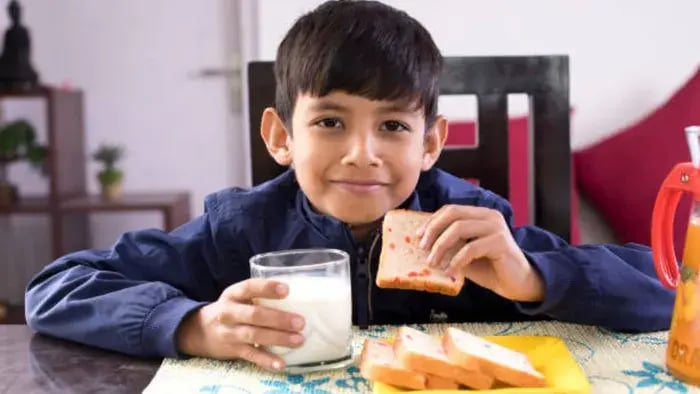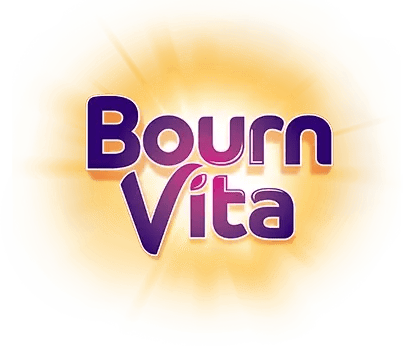- Ghee
- Full-Fat Milk
- Eggs (with yolk)
- Peanuts
- Almonds
- Walnuts
- Coconut and Coconut Oil
- Full-Fat Curd (Dahi)
- Lactose-Free Options (Lactose-Free Milk, Soy Milk, and Almond Milk)
- Til (Sesame Seeds)
Introduction
The word “fat” makes us hesitate, especially when it comes to choosing food for kids. But not all fats are bad. In fact, some high-fat foods are full of nutrients that are essential for your child’s growth, brain development, and energy levels. The secret lies in knowing which fats are good and how to include them in daily meals wisely.

Some high-fat foods give you more than just calories — they help absorb essential vitamins, support brain health, and keep kids full and focused. Foods like ghee, eggs, full-fat dairy, nuts, seeds and coconut are excellent examples. These are common in many Indian homes and are not only nutritious but also easy to add to simple meals.
Many high-fat foods that may seem too rich or indulgent are actually nourishing when served in the right portion. Eradicating fats from a child’s diet can lead to lack of key nutrients and lower energy. Choosing the right fats is better than avoiding them altogether.
Healthy fats support your child’s learning, immunity, and overall well-being. With mindful choices and simple planning, high-fat foods can become a part of everyday eating — helping kids grow strong, think clearly and stay active.
10 Foods That Are High In Fat Yet Healthy For Kids

Ghee
Ghee is a staple in many Indian homes and is one of the healthiest fats for kids. According to a study published in the National Research Council Committee on Diet and Health 1989, it helps in digestion, brain development, and energy levels. Add a spoonful of ghee to hot rice, dal, or roti. It also helps absorb vitamins A, D, E, and K, making everyday meals more nourishing.
Full-Fat Milk
According to FASSI, full-fat milk is packed with natural fats, calcium and protein. It helps in bone development and provides long-lasting energy. A glass of milk with breakfast or bedtime keeps your child full and focused. Don’t remove the cream layer unless advised by a doctor.
Eggs (with yolk)
Eggs are easily available and quick to cook. According to a study published in the National Research Council Committee on Diet and Health 1989, the yolk has choline and good fats that support memory and learning. Whether boiled, scrambled, or added to parathas, eggs are a versatile, high-fat food perfect for growing kids.
Peanuts
As per a study published in J Food Sci Technol 2015, peanuts are an affordable, high-fat snack rich in protein, healthy fats, and minerals. Roasted peanuts or homemade peanut chutney are easy to add to meals. Just make sure they are chewed well or crushed for younger children to avoid choking.
Almonds
According to a study published in Nutrients 2021, a few soaked almonds in the morning give you healthy fats, vitamin E, and brain boosting nutrients. You can also grind almonds into powder and mix them into milk, roti dough, or halwa so that younger kids can consume them easily.
Walnuts
As per a study published in, Nutrients 2020, walnuts are rich in omega-3 fatty acids and good for the brain. They are a bit costly but even a small amount makes a difference. Add crushed walnuts to laddoos, porridge or stuffed parathas for a nutritious twist.
Coconut and Coconut Oil
According to coconut development board, coconut is widely used in India. Fresh coconut, coconut oil and even coconut milk contain medium-chain fats that give quick energy and support digestion. Add coconut to chutneys, sabzis, or even make coconut ladoos for a delicious, fat-rich treat.
Full-Fat Curd (Dahi)
As per a study published in the Indian J Med Res 2014, curd made from full-fat milk gives probiotics, healthy fats and calcium. It’s perfect for gut health and nutrient absorption. Serve it with paratha, rice, or as a sweet curd with jaggery.
Lactose-Free Options (Lactose-Free Milk, Soy Milk, and Almond Milk)
For children with lactose intolerance, options like lactose-free cow’s milk, unsweetened soy milk, and almond milk offer healthy fats and are often boosted with calcium and vitamin D. Serve them as a drink, blend into smoothies, or use in cereals and porridges. Always choose unsweetened, fortified varieties to get the most nutrition.
Til (Sesame Seeds)
According to ICMR, til or sesame seeds are rich in fats, calcium and iron. These are commonly used in Indian sweets like til laddoos and chikkis. You can also roast and add them to sabzis or chutneys. They’re especially great during winter.
Conclusion

Healthy fats are not only safe but necessary for your child’s overall growth. Ghee, peanuts, eggs, coconut and curd are easily available in Indian kitchens and are full of nutrients your child needs. Add these high-fat foods in a simple and balanced way to support brain development, energy and long-term health — all while making meals yummy and familiar.
Her love for storytelling began with reading her grandfather’s speeches, where Tarishi saw the power of words in creating lasting memories. Combining her passions for food and writing, she has turned her life into a fulfilling path of sharing stories that celebrate flavours and how food brings communities together.
The views expressed are that of the expert alone.
The information provided in this content is for informational purposes only and should not be considered a substitute for professional medical advice, diagnosis, or treatment. Always seek the advice of your physician or another qualified healthcare provider before making any significant changes to your diet, exercise, or medication routines.
References
https://www.ncbi.nlm.nih.gov/books/NBK218749/
https://www.ncbi.nlm.nih.gov/books/NBK218749/
https://pmc.ncbi.nlm.nih.gov/articles/PMC4711439/
https://pmc.ncbi.nlm.nih.gov/articles/PMC8229803/
https://icar-iior.org.in/sites/default/files/iiorcontent/pops/sesame.pdf
















